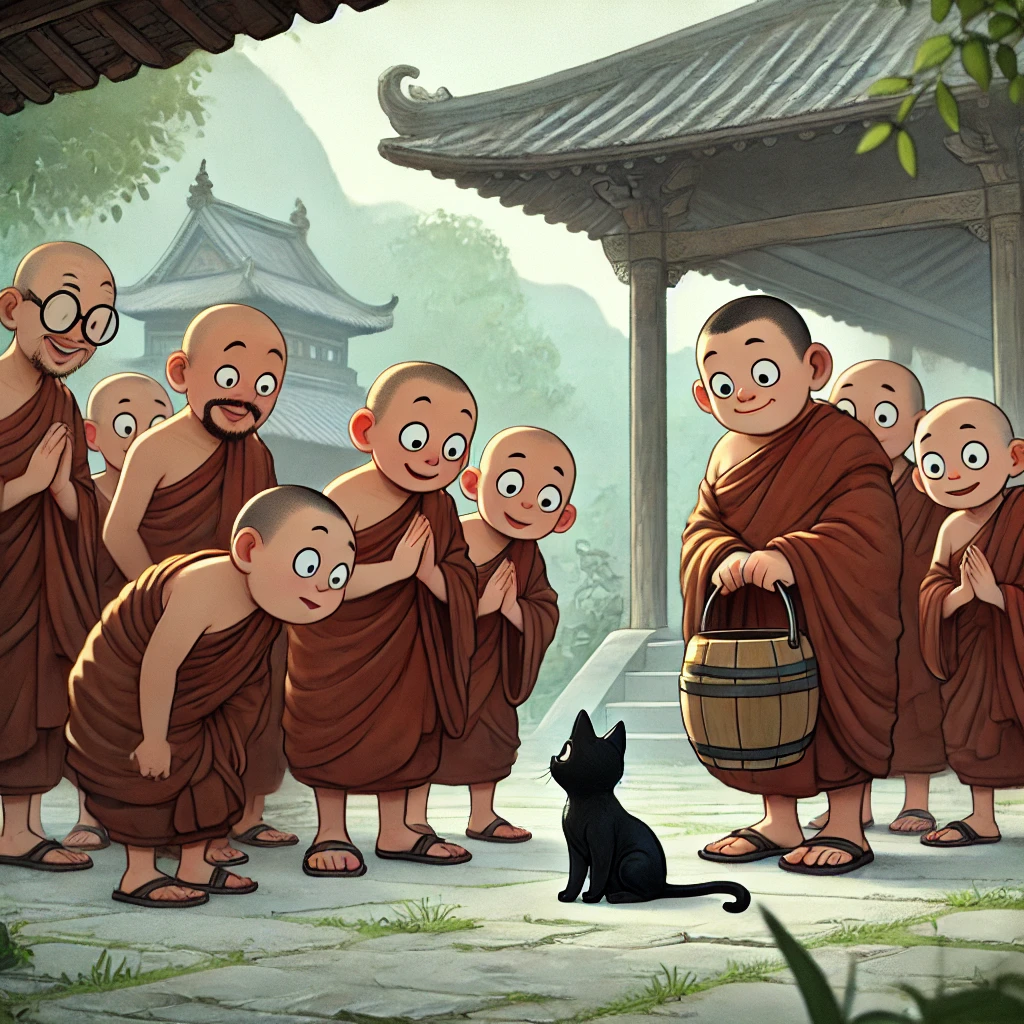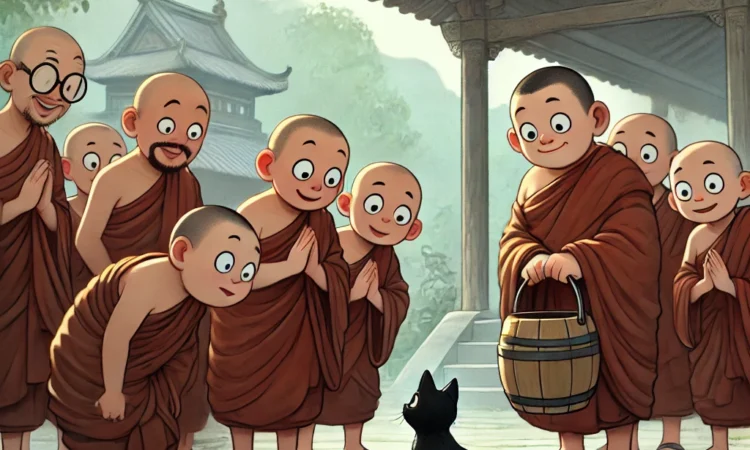
In the world of Tarot, traditions hold a significant place. The meanings of cards, spreads, rituals, and even the decks themselves are steeped in history and tradition. These practices have been passed down through generations, shaping how we read and interpret the cards today. However, just like in the story of the Buddhist monk, the cat, and the bucket, there’s a lesson to be learned about following traditions without question, and falling into the “tradition trap.”.
The Story of the Monk, the Cat, and the Bucket
For those unfamiliar with the tale, it goes something like this:
In a Buddhist monastery, a cat would often disturb the monks during their meditation sessions. To solve this problem, the abbot decided to tie the cat up during meditation. This became a daily ritual, and the cat would be tied up before each session. Years passed, and the original cat died. The monks, believing the ritual was essential, found another cat and continued the practice. Eventually, the reason for tying up the cat was forgotten, but the act itself became an unquestioned tradition, passed down through generations.
This story highlights a common human tendency: to follow traditions without understanding their origins or questioning their relevance.
Tarot and Traditions: A Double-Edged Sword
In Tarot, traditions can serve as a valuable guide, offering structure and a shared language for interpretation. They help us connect with the rich history and symbolism that underpins the practice. However, there’s a risk of falling into the “tradition trap”—following customs and interpretations without understanding their origins or considering their relevance in our lives.
The Tradition Trap in Tarot
- Rigid Interpretations: Traditional meanings of Tarot cards are often seen as fixed and unchangeable. For example, the Tower card is traditionally associated with sudden upheaval and destruction. However, without considering the context of a reading or the individual seeking guidance, this interpretation can become limiting.
- Traditional Spreads: Classic spreads like the Celtic Cross are widely used and respected. Yet, sticking rigidly to these spreads can stifle creativity and intuition, preventing readers from exploring new ways to gain insights.
- Rituals and Practices: Many Tarot practitioners have rituals, such as cleansing the deck, shuffling in a particular manner, or using specific spreads for different queries. While these practices can be grounding and enhance the reading experience, they can also become rote actions devoid of personal meaning.
Finding Balance: Honoring and Evolving Traditions
Just as the monks in the story needed to reconsider the necessity of tying up the cat, Tarot readers can benefit from examining the traditions they follow. Here are a few ways to honor traditions while also evolving them:
- Understand the Origins: Learning the history and original meanings of Tarot traditions can deepen your practice. Understanding why certain interpretations and rituals developed allows you to use them more meaningfully.
- Adapt to Your Needs: Don’t be afraid to modify or abandon traditions that don’t resonate with you. For example, if a traditional spread feels too rigid, experiment with creating your own. If a card’s traditional meaning doesn’t fit the context of a reading, trust your intuition to explore other interpretations.
- Incorporate Personal Symbolism: Just as each reader brings their unique energy to a Tarot reading, incorporating personal symbolism and meanings can make your practice more relevant and insightful.
- Question and Reflect: Regularly reflect on the traditions you follow. Are they enhancing your practice, or have they become empty rituals? Questioning traditions doesn’t mean dismissing them but rather ensuring they serve your growth and understanding.
Conclusion: The Living Tradition of Tarot
Tarot, like any spiritual or divinatory practice, is a living tradition. It grows and evolves with each reader, each interpretation, and each new perspective. By learning from the story of the monk, the cat, and the bucket, we can approach Tarot with a balanced mindset—honoring the wisdom of the past while being open to new insights and interpretations. In doing so, we keep the tradition alive, relevant, and vibrant for ourselves and future generations of Tarot enthusiasts.

